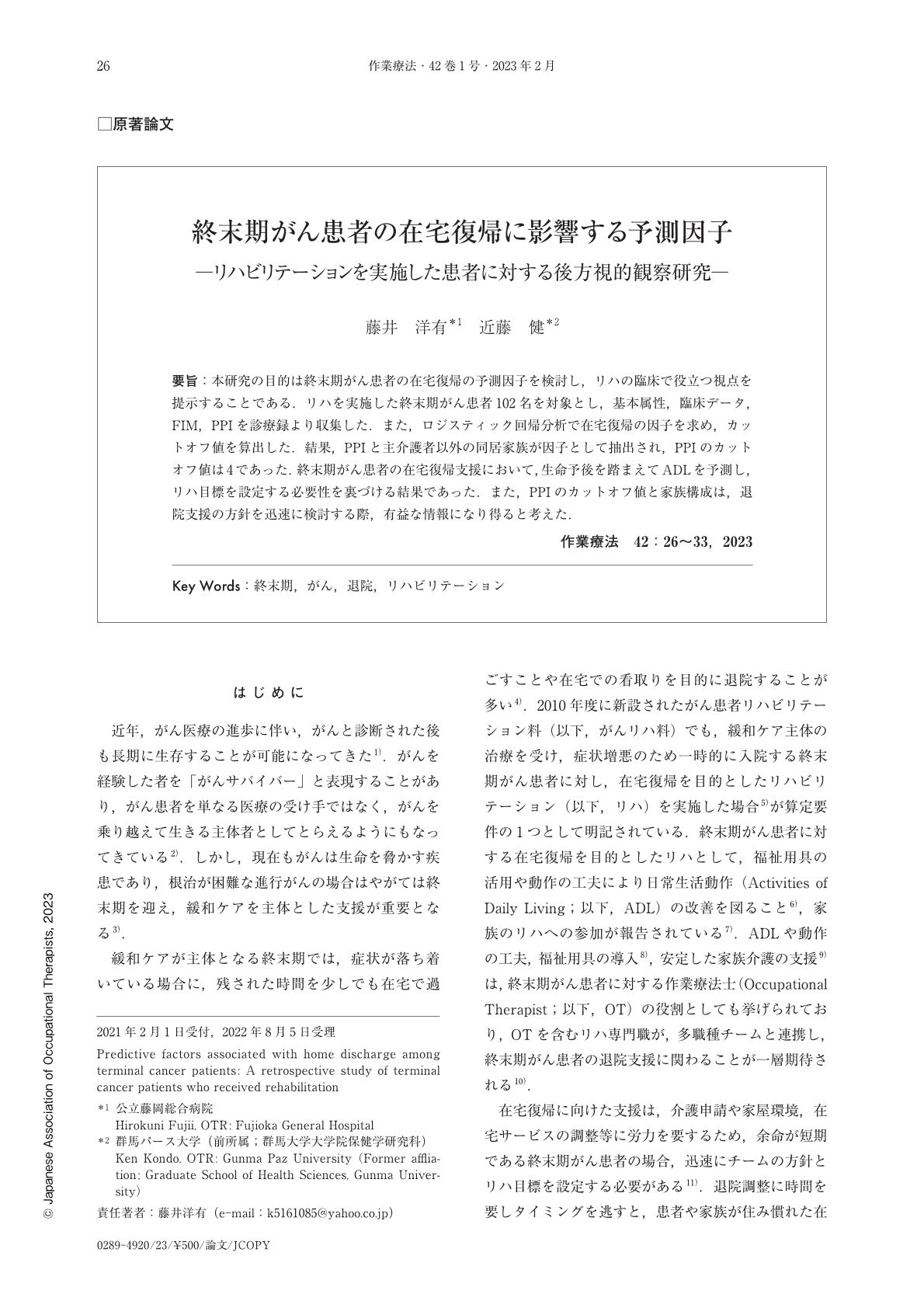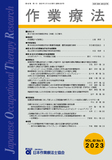Japanese
English
- 販売していません
- Abstract 文献概要
- 1ページ目 Look Inside
- 参考文献 Reference
要旨:本研究の目的は終末期がん患者の在宅復帰の予測因子を検討し,リハの臨床で役立つ視点を提示することである.リハを実施した終末期がん患者102名を対象とし,基本属性,臨床データ,FIM,PPIを診療録より収集した.また,ロジスティック回帰分析で在宅復帰の因子を求め,カットオフ値を算出した.結果,PPIと主介護者以外の同居家族が因子として抽出され,PPIのカットオフ値は4であった.終末期がん患者の在宅復帰支援において,生命予後を踏まえてADLを予測し,リハ目標を設定する必要性を裏づける結果であった.また,PPIのカットオフ値と家族構成は,退院支援の方針を迅速に検討する際,有益な情報になり得ると考えた.
The purpose of this study was to clarify predictive factors associated with home discharge in terminal cancer patients, thus providing a useful perspective in rehabilitation settings. The demographic and clinical data, and the Functional Independence Measure and Palliative Prognostic Index (PPI) were collected from the medical records of 102 terminal patients. The factors of home discharge were investigated using logistic regression analysis based on admission variables, and the cutoff value was estimated. The PPI and the presence of other family members besides a primary family caregiver were found to be the significant contributing factors of home discharge. The optimal cutoff value for the PPI was 4. These findings support that change in ADL based on life prognosis is important in rehabilitation for home discharge, and that PPI score and family structure could be useful information when addressing the prompt discharge support for terminal cancer patients.

Copyright © 2023, Japanese Association of Occupational Therapists. All rights reserved.


